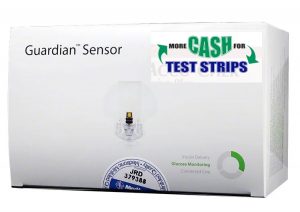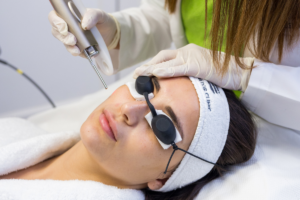Lyme Disease Treatment: Options, Stages & Recovery
4 min read
Lyme disease is a potentially serious illness caused by the Borrelia burgdorferi bacterium, typically transmitted through the bite of infected black-legged ticks, commonly known as deer ticks. If left untreated, Lyme disease can lead to long-term health complications affecting the joints, heart, and nervous system. Fortunately, when diagnosed early, Lyme disease is highly treatable. This article explores the stages of Lyme disease, treatment options, and what to expect during recovery.
Understanding Lyme Disease
Lyme disease progresses in three stages:
- Early localized stage: Occurs within 3 to 30 days after a tick bite. Symptoms may include a circular red rash (erythema migrans), fatigue, fever, chills, and muscle aches.
- Early disseminated stage: Weeks to months later, bacteria can spread throughout the body, potentially causing joint pain, facial palsy, and neurological symptoms.
- Late disseminated stage: Months or even years later, untreated infections can result in arthritis, chronic pain, and serious neurological issues.
Timely diagnosis is critical for effective Lyme disease treatment, especially before the disease progresses to advanced stages.
Antibiotic Treatment for Lyme Disease
The cornerstone of Lyme disease treatment is antibiotics. The type and duration of antibiotics depend on the stage of the illness and the severity of symptoms.
1. Oral Antibiotics (Early Stage)
For most early-stage cases, a 10- to 21-day course of oral antibiotics is sufficient. Commonly prescribed medications include:
- Doxycycline: Often the first choice, effective for adults and children over 8.
- Amoxicillin: A safe option for pregnant women and young children.
- Cefuroxime axetil: Used for those allergic to penicillin.
These antibiotics typically clear up the infection and symptoms within a few weeks. Early treatment helps prevent progression to more severe stages.
2. Intravenous Antibiotics (Late or Severe Cases)
If the infection has spread to the central nervous system, heart, or joints, or if oral treatment fails, intravenous (IV) antibiotics may be used. Ceftriaxone is commonly administered for 14 to 28 days.
Though effective, IV treatment can have more side effects, such as lowered white blood cell counts, diarrhea, and allergic reactions. Hospitalization may be required in severe cases.
Post-Treatment Lyme Disease Syndrome (PTLDS)
Some patients experience lingering symptoms such as fatigue, joint pain, or cognitive issues even after the infection has been treated. This condition is called Post-Treatment Lyme Disease Syndrome (PTLDS).
While the exact cause is not fully understood, it’s believed to be due to residual inflammation or an immune system response. It’s important to note that PTLDS is not an active infection, and additional antibiotics are usually not recommended.
Treatment focuses on symptom management through:
- Physical therapy for joint or muscle pain
- Cognitive therapy for memory and concentration issues
- Anti-inflammatory medications like NSAIDs
- Lifestyle changes including adequate sleep, nutrition, and stress management
Alternative and Complementary Treatments
While antibiotics remain the primary method of Lyme disease treatment, some patients explore complementary approaches. These may include:
- Herbal therapies: Such as Japanese knotweed or cat’s claw, although evidence is limited.
- Acupuncture or massage: For pain relief and stress reduction.
- Supplements: Like omega-3s or vitamin D to support immune function.
Patients should consult their healthcare provider before starting any alternative treatments to ensure they don’t interfere with conventional care.
Preventing Reinfection
Recovering from Lyme disease doesn’t make you immune. You can be reinfected if bitten by another infected tick. Here are ways to reduce your risk:
- Use tick repellents containing DEET or permethrin
- Wear long sleeves and pants in wooded or grassy areas
- Perform tick checks after outdoor activities
- Shower soon after being outdoors
- Remove ticks quickly using fine-tipped tweezers
Early detection and prompt treatment remain your best defense.
When to See a Doctor
You should consult a healthcare provider if:
- You notice a tick bite and develop flu-like symptoms
- You see a bullseye rash (even if it’s not itchy or painful)
- You experience unexplained joint pain or neurological symptoms
- You have ongoing symptoms after completing antibiotic treatment
A simple blood test may help confirm the diagnosis, although tests are more accurate a few weeks after infection.
Recovery Outlook
With proper treatment, most people recover fully from Lyme disease. Recovery time can vary—from a few weeks for early cases to several months for more advanced infections. Consistent follow-up with your doctor can help manage symptoms and track your progress.
Support from friends, family, and medical professionals is key during recovery. Mental health support is also important, especially if the illness has caused prolonged fatigue, anxiety, or depression.
Conclusion
Lyme disease can be a serious and debilitating illness if not treated promptly. However, with early diagnosis and proper Lyme disease treatment, most people make a full recovery. Antibiotics are highly effective, and support therapies can help with any lingering symptoms. If you suspect you’ve been bitten by a tick or have symptoms of Lyme disease, don’t delay—seek medical advice right away. Quick action is the first step toward a full and healthy recovery.







